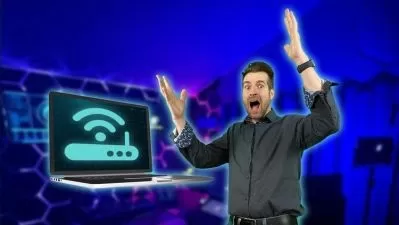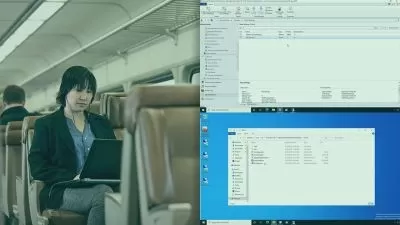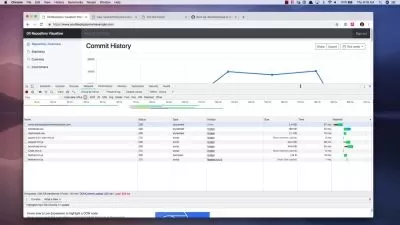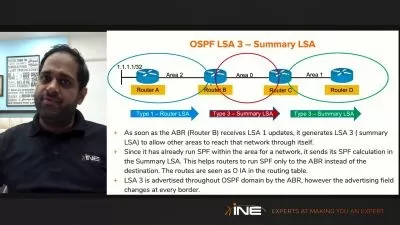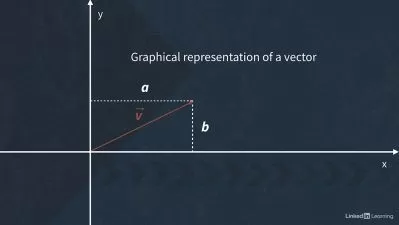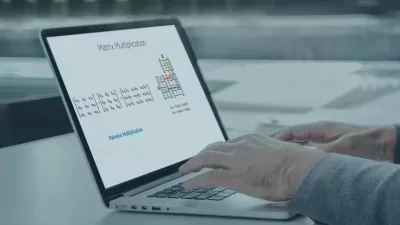Quantum Computing from Beginner to Expert
Calvin Tang
3:45:26
Description
Learning Quantum Computing through Linear Algebra
What You'll Learn?
- Introduction of Quantum Computing
- Bloch Sphere
- Basic Logic Gates for Single Qubit
- Rotation Logic Gates for Single Qubit
- Multi-Qubit Logic Gates
- Quantum Measurement
- Quantum Circuits
- Algorithms: Amplitude Amplification
- Algorithms: Quantum Fourier Transform
- Algorithms: Quantum Phase Estimation
- Algorithms: Quantum Arithmetic Operations
- Algorithms: HHL Algorithm
- Algorithms: Deutsch-Josza Algorithm
- Algorithms: Grover Algorithm
Who is this for?
What You Need to Know?
More details
DescriptionThis comprehensive course is suitable for a wide range of learners, from those who are just beginning to explore quantum computing to experts in the field. Our aim is to cover every aspect of quantum computing, starting from the basics and progressing to complex application scenarios. Unlike other courses, we place a strong emphasis on learning quantum computing through linear algebra and provide detailed matrices and vector calculations for key concepts, allowing you to develop a solid understanding of the subject matter.
The course is divided into two main parts, each of which is designed to provide learners with a deep understanding of quantum computing:
Basic part, which includes:
An overview of quantum computing, quantum bits, single quantum bit logical gates, multi-quantum bit logical gates, quantum measurement, quantum circuits, and more.
Algorithm part, which includes:
The Hadamard Test, SWAP Test, amplitude amplification, quantum Fourier transform, quantum phase estimation, quantum arithmetic, the HHL algorithm, Deutsch-Josza algorithm, Grover algorithm, and more.
But that's not all - we're continually updating and improving the course to include even more valuable information, such as:
Programming part, which includes:
Examples of basic logic gates based on Qiskit, as well as learning examples of algorithms.
Machine learning part, which includes:
Algorithms and implementations of quantum machine learning and quantum artificial intelligence.
Application part, which includes:
The application of quantum computing technology in finance and other fields, allowing you to gain a broader understanding of how quantum computing is transforming industries and changing the face of technology.
Who this course is for:
- Students who want to learn about Quantum Computing
- Quantum Computing enthusiasts
This comprehensive course is suitable for a wide range of learners, from those who are just beginning to explore quantum computing to experts in the field. Our aim is to cover every aspect of quantum computing, starting from the basics and progressing to complex application scenarios. Unlike other courses, we place a strong emphasis on learning quantum computing through linear algebra and provide detailed matrices and vector calculations for key concepts, allowing you to develop a solid understanding of the subject matter.
The course is divided into two main parts, each of which is designed to provide learners with a deep understanding of quantum computing:
Basic part, which includes:
An overview of quantum computing, quantum bits, single quantum bit logical gates, multi-quantum bit logical gates, quantum measurement, quantum circuits, and more.
Algorithm part, which includes:
The Hadamard Test, SWAP Test, amplitude amplification, quantum Fourier transform, quantum phase estimation, quantum arithmetic, the HHL algorithm, Deutsch-Josza algorithm, Grover algorithm, and more.
But that's not all - we're continually updating and improving the course to include even more valuable information, such as:
Programming part, which includes:
Examples of basic logic gates based on Qiskit, as well as learning examples of algorithms.
Machine learning part, which includes:
Algorithms and implementations of quantum machine learning and quantum artificial intelligence.
Application part, which includes:
The application of quantum computing technology in finance and other fields, allowing you to gain a broader understanding of how quantum computing is transforming industries and changing the face of technology.
Who this course is for:
- Students who want to learn about Quantum Computing
- Quantum Computing enthusiasts
User Reviews
Rating
Calvin Tang
Instructor's Courses
Udemy
View courses Udemy- language english
- Training sessions 80
- duration 3:45:26
- Release Date 2023/06/12






